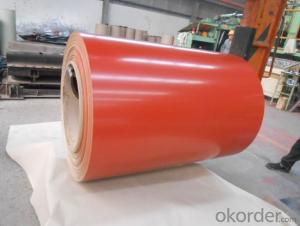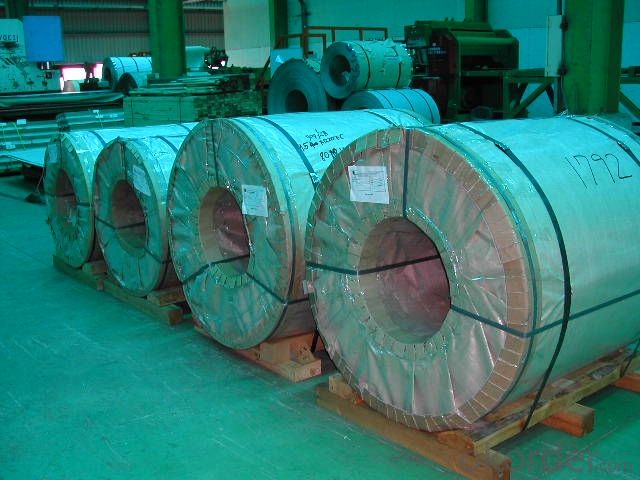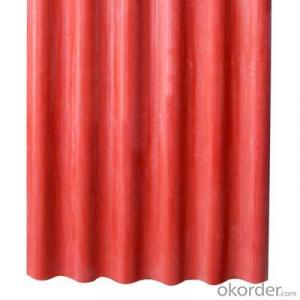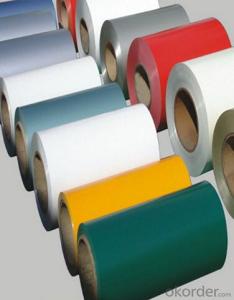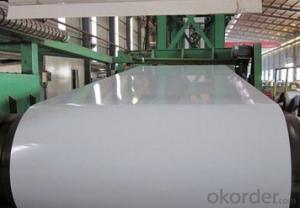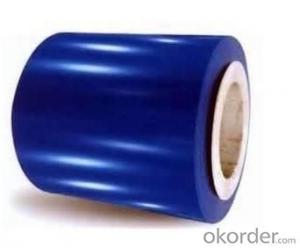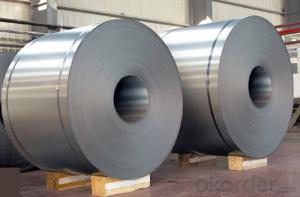factory ppgi galvanized coils -prepainted
- Loading Port:
- Tianjin
- Payment Terms:
- TT OR LC
- Min Order Qty:
- 25 m.t.
- Supply Capability:
- 10000 m.t./month
OKorder Service Pledge
OKorder Financial Service
You Might Also Like
PPGI
I Specifications:
1. Thickness: 0.14-0.8mm
2.Width:600-1250mm
3. Material: SGCC, SGCD, SECC, SECD, DX51D+Z
4.Zinc coating: 30-180G/M2
5. Surface Structure: Galvanized, zero spangle, regular spangle or normal spangle
6. COLOR: RAL number or sample color
Topside: 5micron primer +15-20microns polyester
Backside: 5-8microns primer epoxy.
7. Surface treatment: chromated and oiled, chromated and non-oiled
II Main characteristics:
1. Strong corrosion resistance
2. Surface quality
3. Conducive to deep processing, such as corrugated steel sheet 4.economy and practicality
III Applications:
Household Appliance:
1.Refrigerator shutter &side panels, Washer, Freezers, Air conditions,
2.Rice Cooker, Microwave Ovens, Water Heaters, Sterilization Cabinets, Range Hoods
3.Computer Panels , DVD/DVB panels, TV back panel etc.
Teaching Board: whiteboard, blackboard, green board (chalk board).
Indoor Decoration: Fireproof Door, kitchen cabinet, wall decoration.
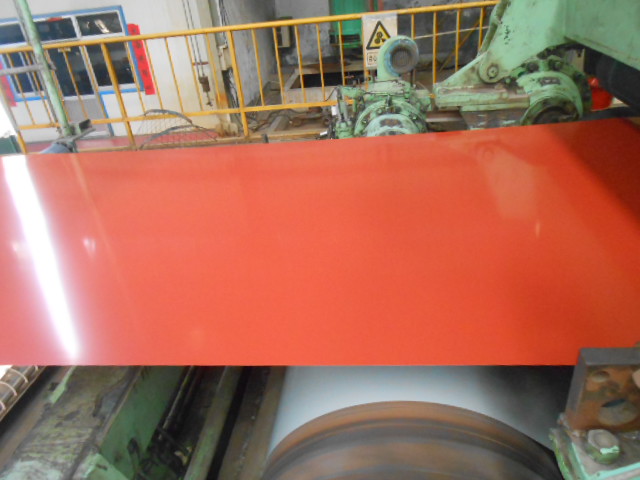
- Q: How long can steel coils be stored before they need to be used?
- The storage duration for steel coils can vary depending on various factors such as the type of steel, environmental conditions, and proper storage techniques. However, generally, steel coils can be stored for an extended period, ranging from several months to a few years, as long as they are stored in a controlled environment to prevent corrosion and damage.
- Q: What are the different types of steel coil packaging?
- Various industries use different methods to package steel coils. Some common types include: 1. Wooden Crates: Steel coils are often placed in wooden crates for transportation and storage. These crates effectively protect against damage and ensure secure transit. 2. Steel Frame Bundles: Steel coils are tightly strapped together using steel bands or wires, creating a sturdy bundle that can be easily lifted and moved with cranes or forklifts. This method is suitable for vertical stacking. 3. Steel Strapping: Steel coils can also be packaged using steel strapping. Straps are tightly wrapped around the coils to secure them in place, providing protection against movement and damage during transportation. 4. VCI (Volatile Corrosion Inhibitor) Packaging: VCI packaging is ideal for preventing corrosion during storage and shipment. The coils are wrapped in special VCI film or paper that releases corrosion-inhibiting molecules, ensuring the coils remain rust-free. 5. Cardboard Packaging: Smaller steel coils or those needing extra protection can be packaged in cardboard boxes or cartons. The coils are placed inside and the box is sealed, creating a barrier against damage and contamination. 6. Stretch Wrapping: Plastic film is tightly wrapped around the steel coils, creating a secure and protective layer. This method is useful when coils need protection from dust, moisture, or other external elements. The choice of steel coil packaging method depends on factors such as size, weight, transportation requirements, and desired level of protection. Each method offers its own advantages and is chosen based on industry needs and coil specifications.
- Q: Can't find it- this is for a physics experiment for youngs modulus done with a steel wire.
- It is the Yield Strenght that you are looking for...that is another word for elastic limit. AND, for steel, it does depend on the variant of steel. Not all types of steel are identical, since steel isn't a pure substance. For Young's modulus (and other stiffness properties), just about all variants have the same values. However, for strength properties like Yield strength and ultimate strength and fatigue strength, it does depend on variant, and is precisely why different recipies exist in AISI standards.
- Q: What are steel coils used for?
- Steel coils are used in a wide range of industries and applications, including manufacturing, construction, automotive, and appliances. They are commonly used in the production of various metal products such as pipes, tubes, sheets, and wires. Steel coils provide strength, durability, and versatility, making them essential in many industrial processes.
- Q: What are the common coil widths and thickness combinations available for steel coils?
- The common coil widths and thickness combinations available for steel coils vary depending on the specific requirements and industry standards. However, there are some standard sizes that are commonly available in the market. For coil widths, the most common standard sizes range from 600mm to 2000mm. These widths are widely used in various industries such as automotive, construction, and manufacturing. However, custom widths are also available to meet specific project needs. As for the thickness combinations, steel coils are typically available in a range of thicknesses. The most common thicknesses for steel coils are between 0.4mm and 3mm. However, thicker or thinner options are available depending on the specific application. It is important to note that these standard sizes and thickness combinations may vary based on the specific steel grade, manufacturing process, and the supplier's capabilities. It is always recommended to discuss the required specifications with the supplier or manufacturer to ensure the availability of the desired coil widths and thickness combinations.
- Q: My musical saw has, despite my best efforts, got little patches of rust on it. How Do I go about removing the rust without spending too much on rust-removal products and without affecting the properties of the steel?
- Steel wool and a bit of WD 40. Steel wool will remove the rust and the WD 40 will protect it in the future.
- Q: (I'm not sure if steel is in fact a mineral)But I want to know if .. Last say topaz is stronger/harder then steel
- Sandpaper , quartz will wear a hole in alloy steel. Just rub it. The steel that is.
- Q: How are steel coils stored to prevent damage?
- Steel coils are typically stored in a way that prevents damage and ensures their integrity. One common method is to stack the coils in a horizontal position. This helps distribute the weight evenly across the coils, minimizing the risk of deformation or damage. In addition, wooden or steel dunnage is often placed between each layer of coils to provide support and prevent them from shifting during storage or transportation. To further protect the coils from damage, they are often stored indoors or in covered areas to shield them from exposure to the elements. This helps prevent rusting or corrosion, which can compromise the quality of the steel. If outdoor storage is necessary, the coils may be covered with weather-resistant tarps or protective coatings to minimize the impact of rain, snow, or sunlight. Furthermore, it is important to consider the stacking height to prevent excessive pressure on the lower coils. To avoid damage, coils are typically stacked in a way that ensures the weight from the upper layers is distributed evenly across the lower ones. This can include using specialized stacking equipment or racks designed to handle the weight and dimensions of the coils. Overall, proper storage of steel coils involves careful consideration of weight distribution, protection from the elements, and minimizing contact between coils to prevent damage and maintain their quality.
- Q: How are steel coils used in the production of containers?
- Steel coils are used in the production of containers as they are the primary material for manufacturing container bodies. These coils are shaped and welded into the desired container shape, providing strength and durability to the final product.
- Q: What is the process of recycling steel coils?
- The process of recycling steel coils involves several steps. First, the steel coils are collected from various sources, such as manufacturing and construction sites. Next, the coils are transported to a recycling facility where they undergo a thorough inspection and sorting process. The coils are then cleaned to remove any contaminants or impurities. After cleaning, the steel coils are shredded into smaller pieces and melted down in a furnace. The molten steel is then molded into new coils or other steel products. Finally, the recycled steel coils are tested for quality and can be used in various industries, reducing the need for new steel production and minimizing waste.
Send your message to us
factory ppgi galvanized coils -prepainted
- Loading Port:
- Tianjin
- Payment Terms:
- TT OR LC
- Min Order Qty:
- 25 m.t.
- Supply Capability:
- 10000 m.t./month
OKorder Service Pledge
OKorder Financial Service
Similar products
Hot products
Hot Searches
Related keywords
